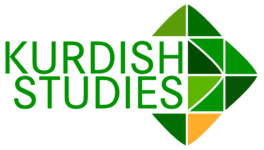Mitigation of Overweight Problems in Children: A Study of the Combined Effects of High-Intensity Interval Training and Dietary Interventions
Department of Sport, Gdansk University of Physical Education and Sport, 80-336 Gdansk, Poland
Qiao Meng
Qian Wang
Pediatrics Department, Liaocheng people’s Hospital, Liaocheng, Shandong, 252000, China
Taofeng Liu
Physical Education Institute (Main Campus), Zhengzhou University, Zhengzhou, Henan, 450001, China.
Abstract
Objective:To study the combined effects of high-intensity interval training and dietary interventions in order to assess their effects on body mass index, cardiovascular function and endothelial cell function in overweight children. Methods: At our institution, we included 300 overweight children who were seen between June 2021 and July 2023. According to the randomized numerical allocation method, we divided them into a high-intensity interval training intervention group and a combined intervention group, with 150 cases in each group. The high-intensity interval training group includes 75 males and 75 females, while the combined treatment group also includes 75 males and 75 females. We will observe the performance of children in these two groups in terms of body mass index, cardiovascular function and endothelial cell function. Results: After evaluating the intervention, the combined intervention group presented a more superior performance in terms of CO and VDC indices, with values that significantly exceeded those of the group that received only high-intensity interval training. In contrast, HR and TCR levels were lower in this group than in the high-intensity interval training group, with statistically significant differences (p < 0.05). After the intervention, ET-1 and vWF levels were lower in the combined intervention group than in the high-intensity interval training only group. At the same time, FMD and NO levels in this group were nevertheless higher than those in the high-intensity interval training group, and there was a statistically significant difference (P < 0.05). After performing the intervention, the combined intervention group demonstrated superior results in terms of waist circumference and BMI, with statistically significant differences (P < 0.05). Meanwhile, the lipid indices of the combined intervention group were more favorable than those of the high-intensity interval training group after the intervention, with a statistically significant difference (P < 0.05). Conclusion: By combining high-intensity interval training and dietary intervention, we can promote fat consumption, enhance the antioxidant capacity of the body, and strengthen the cardiorespiratory function and other mechanisms in overweight children, which can effectively improve the body mass index, cardiovascular function, and endothelial cell function of children. The effect of this combined intervention is remarkable and has the potential to be worthwhile for clinical application.
